How long does it take to get to the moon?
Here we explore how long it takes to get to the moon and the factors that affect the journey to our rocky companion.

- Traveling at the speed of light
- Fastest spacecraft
- Driving to the moon

Q&A with an expert
- Calculating travel times
Moon mission travel times
Additional resources, bibliography.
If you wanted to go to the moon, how long would it take?
Well, the answer depends on a number of factors ranging from the positions of Earth and the moon , to whether you want to land on the surface or just zip past, and especially to the technology used to propel you there.
The average travel time to the moon (providing the moon is your intended destination), using current rocket propulsion is approximately three days. The fastest flight to the moon without stopping was achieved by NASA's New Horizons probe when it passed the moon in just 8 hours 35 minutes while en route to Pluto .
Currently, the fastest crewed flight to the moon was Apollo 8. The spacecraft entered lunar orbit just 69 hours and 8 minutes after launch according to NASA .
Here we take a look at how long a trip to the moon would take using available technology and explore the travel times of previous missions to our lunar companion.
Related: Missions to the moon: Past, present and future
How far away is the moon?
To find out how long it takes to get to the moon, we first must know how far away it is.
The average distance between Earth and the moon is about 238,855 miles (384,400 kilometers), according to NASA. But because the moon does not orbit Earth in a perfect circle, its distance from Earth is not constant. At its closest point to Earth — known as perigee — the moon is about 226,000 miles (363,300 km) away and at its farthest — known as apogee — it's about 251,000 miles (405,500 km) away.
How long would it take to travel to the moon at the speed of light?
Light travels at approximately 186,282 miles per second (299,792 km per second). Therefore, a light shining from the moon would take the following amount of time to reach Earth (or vice versa):
- Closest point: 1.2 seconds
- Farthest point: 1.4 seconds
- Average distance: 1.3 seconds
How long would it take to travel to the moon on the fastest spacecraft so far?

The fastest spacecraft is NASA's Parker Solar Probe , which keeps breaking its own speed records as it moves closer to the sun. On Nov. 21, 2021, the Parker Solar Probe clocked a top speed of 101 miles (163 kilometers) per second during its 10th close flyby of our star, which translates to a blistering 364,621 mph (586,000 kph). According to a NASA statement , when the Parker Solar Probe comes within 4 million miles (6.2 million kilometers) of the solar surface in December 2024, the spacecraft's speed will top 430,000 miles per hour (692,000 km/h)!
So if you were theoretically able to hitch a ride on the Parker Solar Probe and take it on a detour from its sun-focused mission to travel in a straight line from Earth to the moon, traveling at the speeds the probe reaches during its 10th flyby (101 miles per second), the time it would take you to get to the moon would be:
- Closest point: 37.2 minutes
- Farthest point: 41.4 minutes
- Average distance: 39.4 minutes
How long would it take to drive to the moon?

Let's say you decided to drive to the moon (and that it was actually possible). At an average distance of 238,855 miles (384,400 km) and driving at a constant speed of 60 mph (96 km/h), it would take about 166 days.
We asked Michael Khan, ESA Senior Mission Analyst some frequently asked questions about travel times to the moon.
Michael Khan is a Senior Mission Analyst for the European Space Agency (ESA). His work involves studying the orbital mechanics for journeys to planetary bodies including Mars.
And what affects the travel time?
The time it takes to get from one celestial body to another depends largely on the energy that one is willing to expend. Here "energy" refers to the effort put in by the launch vehicle and the sum of the manoeuvres of the rocket motors aboard the spacecraft, and the amount of propellant that is used. In space travel, everything boils down to energy. Spaceflight is the clever management of energy.
Some common solutions for transfers to the moon are 1) the Hohmann-like transfer and 2) the Free Return Transfer. The Hohmann Transfer is often referred to as the one that requires the lowest energy, but that is true only if you want the transfer to last only a few days and, in addition, if some constraints on the launch apply. Things get very complicated from there on, so I won't go into details.
The transfer duration for the Hohmann-like transfer is around 5 days. There is some variation in this duration because the moon orbit is eccentric, so its distance from the Earth varies quite a bit with time, and with it, the characteristics of the transfer orbit.
The Free Return transfer is a popular transfer for manned spacecraft. It requires more energy than the Hohmann-like transfer, but it is a lot safer, because its design is such that if the rocket engine fails at the moment you are trying to insert into the orbit around the Moon, the gravity of the Moon will deflect the orbit exactly such that it returns to the Earth. So even with a defective propulsion system, you can still get the people back safely. The Apollo missions flew on Free Return transfers. They take around 3 days to reach the moon.
Why are journey times a lot slower for spacecraft intending to orbit or land on the target body e.g. Mars compared to those that are just going to fly by?
If you want your spacecraft to enter Mars orbit or to land on the surface, you add a lot of constraints to the design problem. For an orbiter, you have to consider the significant amount of propellant required for orbit insertion, while for a lander, you have to design and build a heat shield that can withstand the loads of atmospheric entry. Usually, this will mean that the arrival velocity of Mars cannot exceed a certain boundary. Adding this constraint to the trajectory optimisation problem will limit the range of solutions you obtain to transfers that are Hohmann-like. This usually leads to an increase in transfer duration.
Calculating travel times to the moon — it's not that straightforward
A problem with the previous calculations is that they measure the distance between Earth and the moon in a straight line and assume the two bodies remain at a constant distance; that is, assuming that when a probe is launched from Earth, the moon would remain the same distance away by the time the probe arrives.
In reality, however, the distance between Earth and the moon is not constant due to the moon's elliptical orbit, so engineers must calculate the ideal orbits for sending a spacecraft from Earth to the moon. Like throwing a dart at a moving target from a moving vehicle, they must calculate where the moon will be when the spacecraft arrives, not where it is when it leaves Earth.
Another factor engineers need to take into account when calculating travel times to the moon is whether the mission has the intention of landing on the surface or entering lunar orbit. In these cases, traveling there as fast as possible is not feasible as the spacecraft needs to arrive slowly enough to perform orbit insertion maneuvers.
More than 140 missions have been launched to the moon, each with a different objective, route and travel time.
Perhaps the most famous — the crewed Apollo 11 mission — took four days, six hours and 45 minutes to reach the moon. Apollo 10 still holds the record for the fastest speed any humans have ever traveled when it clocked a top speed of while the crew of Apollo 10 traveled 24,791 mph (39,897 kph) relative to Earth as they rocketed back to our planet on May 26, 1969.
The first uncrewed flight test of NASA's Orion spacecraft and space launch system rocket — Artemis 1 — reached the moon on flight day six of its journey and swooped down to just 80 miles (130 km) above the lunar surface to gain a gravitational boost to enter a so-called "distant retrograde orbit."
Read more about how space navigation works with accurate timekeeping with these resources from NASA . Learn more about how before the days of GPS engineers were able to navigate from Earth to the moon with such precision with this article by Gwendolyn Vines Gettliffe published at the Massachusetts Institute of Technology (MIT) 'ask an engineer' feature.
Hatfield, M. (2021). Space Dust Presents Opportunities, Challenges as Parker Solar Probe Speeds Back toward the Sun – Parker Solar Probe. [online] blogs.nasa.gov. Available at: https://blogs.nasa.gov/parkersolarprobe/2021/11/10/space-dust-presents-opportunities-challenges-as-parker-solar-probe-speeds-back-toward-the-sun/ .
NASA (2011). Apollo 8. [online] NASA. Available at: https://www.nasa.gov/mission_pages/apollo/missions/apollo8.html .
www.rmg.co.uk. (n.d.). How many people have walked on the Moon? [online] Available at: https://www.rmg.co.uk/stories/topics/how-many-people-have-walked-on-moon .
Join our Space Forums to keep talking space on the latest missions, night sky and more! And if you have a news tip, correction or comment, let us know at: [email protected].
Get the Space.com Newsletter
Breaking space news, the latest updates on rocket launches, skywatching events and more!
Daisy Dobrijevic joined Space.com in February 2022 having previously worked for our sister publication All About Space magazine as a staff writer. Before joining us, Daisy completed an editorial internship with the BBC Sky at Night Magazine and worked at the National Space Centre in Leicester, U.K., where she enjoyed communicating space science to the public. In 2021, Daisy completed a PhD in plant physiology and also holds a Master's in Environmental Science, she is currently based in Nottingham, U.K. Daisy is passionate about all things space, with a penchant for solar activity and space weather. She has a strong interest in astrotourism and loves nothing more than a good northern lights chase!
Space pictures! See our space image of the day
'The last 12 months have broken records like never before': Earth exceeds 1.5 C warming every month for entire year
Get a sneak peek at upcoming 'Avatar Land' in Disney's California Adventure Park
- UFOareAngels The fact that we are still asking this question proves we never went to the moon and are never going back. Reply
- Rathelor Those Parker Solar Probe travel times seems a little too high. Reply
- View All 2 Comments
Most Popular
- 2 The Cassiopeia constellation is surrounded by celestial treasures. Here's how to see them
- 3 How will the stuck Boeing Starliner astronauts perceive time after 6 months in space?
- 4 SpaceX launching private Polaris Dawn astronaut mission Aug. 27: How to watch online
- 5 Emax Tinyhawk III Plus Freestyle RTF drone kit review
- Cast & crew
- User reviews

A Trip to the Moon
- A group of astronomers go on an expedition to the Moon.
- An association of astronomers has convened to listen to the plan of Professor Barbenfouillis, their president, to fly to the moon. With the one dissenting voice quashed by Barbenfouillis and the other members, the plan is approved with Barbenfouillis choosing five others to accompany him. Most of the preparation for the trip is in building the vessel and launching mechanism, which resemble a large bullet and a large gun respectively. Hitting the moon in the eye, the six land safely at their destination. They find that much about the moon is wonderful and fantastical, but also that much is not what they would have liked to encounter as it is life threatening. They have to find a way to get out of their alien predicament to get back home safely. — Huggo
- Composed of 30 spectacular tableaux and using 18 fabulously elaborate decors, the innovative and audacious director, Georges Méliès , presents its audience with an imaginative, turn-of-the-century fantasy extravaganza. Under the intrepid Professor Barbenfouillis' presidency at the renowned Institute of Incoherent Astronomy, its esteemed members conclude that it is high time they ventured into the great unknown by organising an exploratory expedition to the Moon. And before long, the fearless pioneers land their bullet-shaped spaceship on the seemingly desolate lunar plains, witnessing firsthand the marvels of deep space. However, they are utterly unaware that the arid hills have eyes, and the hordes of the Moon Emperor's dreadful Selenites are ready to fend off the intruders. Can the scientists escape from the fascinating but dangerous celestial body? — Nick Riganas
- Professor Barbenfouillis and five of his colleagues from the Academy of Astronomy travel to the Moon aboard a rocket propelled by a giant cannon. Once on the lunar surface, the bold explorers face the many perils hidden in the caves of the mysterious planet. — olisilumea
- At a meeting of the Astronomic Club, its president, Professor Barbenfouillis, proposes a trip to the Moon. After addressing some dissent, five other brave astronomers: Nostradamus, Alcofrisbas, Omega, Micromegas, and Parafaragaramus agree to the plan. They build a space capsule in the shape of a bullet, and a huge cannon to shoot it into space. The astronomers embark and their capsule is fired from the cannon with the help of "marines" (most of whom are played by a bevy of young women in sailors' outfits). The Man in the Moon watches the capsule as it approaches, and it hits him in the eye. Landing safely on the Moon, the astronomers get out of the capsule (without the need of space suits) and watch the Earth rise in the distance. Exhausted by their journey, they unroll their blankets and sleep. As they sleep, a comet passes, the Big Dipper appears with human faces peering out of each star, old Saturn leans out of a window in his ringed planet, and Phoebe, goddess of the Moon, appears seated in a crescent-moon swing. Phoebe causes a snowfall that awakens the astronomers, and they seek shelter in a cavern where they discover giant mushrooms. One astronomer opens his umbrella; it promptly takes root and turns into a giant mushroom itself. At this point, a Selenite (an insectoid alien inhabitant of the Moon, named after one of the Greek moon goddesses, Selene) appears, but it is killed easily by an astronomer, as the creatures explode if they are hit with force. More Selenites appear and it becomes increasingly difficult for the astronomers to destroy them as they are surrounded. The Selenites capture the six astronomers and take them to the palace of their king. An astronomer lifts the Selenite King off his throne and throws him to the ground, causing him to explode. The astronomers run back to their capsule while continuing to hit the pursuing Selenites, and five get inside. The sixth astronomer, Barbenfouillis himself, uses a rope to tip the capsule over a ledge on the Moon and into space. A Selenite tries to seize the capsule at the last minute. Astronomer, capsule, and Selenite fall through space and land in an ocean on Earth, where they are rescued by a ship and towed ashore. The final sequence depicts a celebratory parade in honor of the travelers' return, including a display of the captive Selenite and the unveiling of a commemorative statue bearing the motto "Labor omnia vincit".
Contribute to this page

- See more gaps
- Learn more about contributing
More from this title
More to explore, recently viewed.

- Filmsite Home
- About & Contact
- Privacy Policy
- Terms of Use
Copyright © 1996-2024 Filmsite LLC. All rights reserved.
The best free cultural &
educational media on the web
- Online Courses
- Certificates
- Degrees & Mini-Degrees
- Audio Books
A Trip to the Moon (1902): The First Great Sci-Fi Film"> A Trip to the Moon (1902): The First Great Sci-Fi Film
in Film , Literature , Sci Fi | January 19th, 2011 3 Comments
A year before the Wright brothers launched the first airplane flight in 1903, Georges Méliès , a French filmmaker with already 400 films to his credit, directed a film that visualized a much bigger human ambition – landing a spacecraft on the moon. Loosely based on works by Jules Vernes ( From the Earth to the Moon ) and H. G. Wells ( The First Men in the Moon ), A Trip to the Moon (Le voyage dans la lune) invented one of our favorite cinematic genres – the science fiction film. Today, many film critics consider Méliès’ short film an enduring classic. The Village Voice ranked it #84 on its list of the 100 Best Films of the 20th Century , and you’ll almost certainly recognize the iconic shot at the 4:44 mark.
Méliès’s body of work, which goes well beyond this landmark film, has been recently collected into a new box set. Georges Méliès: First Wizard of Cinema (1896–1913) puts 173 rare and rediscovered films onto a 5 disc, 13-hour collection.
A Trip to the Moon has been added to our collection of Free Movies Online . You can also download a version at the Internet Archive .
If you would like to sign up for Open Culture’s free email newsletter, please find it here . Or follow our posts on Threads , Facebook , BlueSky or Mastodon .
If you would like to support the mission of Open Culture, consider making a donation to our site . It’s hard to rely 100% on ads, and your contributions will help us continue providing the best free cultural and educational materials to learners everywhere. You can contribute through PayPal , Patreon , and Venmo (@openculture). Thanks!
Related Content:
The First Horror Film, George Méliès’ The Haunted Castle (1896)
Watch After the Ball , the 1897 “Adult” Film by Pioneering Director Georges Méliès (Almost NSFW)
Aelita: Queen of Mars (1924)" href="http://www.openculture.com/2015/06/watch-the-first-russian-science-fiction-film-aelita-queen-of-mars-1924.html" rel="bookmark">Watch the First Russian Science Fiction Film, Aelita: Queen of Mars (1924)
by OC | Permalink | Comments (3) |
Related posts:
Comments (3), 3 comments so far.
I was first introduced to this film, while I was at university. And I still love my professor for it :)
love this movie, too! did a score for the second half of it last year, if anyone is interested :) http://vimeo.com/16757866
Thank you for putting this classic film on here it’s great. Is this film “Le Voyage Dans la Lun” a public domain video? I would be very grateful for a reply as I would like to use it in an assignment for University if it is. Thank you for your time, Catherine Knight. 14/03/16
Add a comment
Leave a reply.
Name (required)
Email (required)
XHTML: You can use these tags: <a href="" title=""> <abbr title=""> <acronym title=""> <b> <blockquote cite=""> <cite> <code> <del datetime=""> <em> <i> <q cite=""> <s> <strike> <strong>
Click here to cancel reply.
- 1,700 Free Online Courses
- 200 Online Certificate Programs
- 100+ Online Degree & Mini-Degree Programs
- 1,150 Free Movies
- 1,000 Free Audio Books
- 150+ Best Podcasts
- 800 Free eBooks
- 200 Free Textbooks
- 300 Free Language Lessons
- 150 Free Business Courses
- Free K-12 Education
- Get Our Daily Email
Free Courses
- Art & Art History
- Classics/Ancient World
- Computer Science
- Data Science
- Engineering
- Environment
- Political Science
- Writing & Journalism
- All 1700 Free Courses
Receive our Daily Email
Free updates, get our daily email.
Get the best cultural and educational resources on the web curated for you in a daily email. We never spam. Unsubscribe at any time.
FOLLOW ON SOCIAL MEDIA
Free Movies
- 1150 Free Movies Online
- Free Film Noir
- Silent Films
- Documentaries
- Martial Arts/Kung Fu
- Free Hitchcock Films
- Free Charlie Chaplin
- Free John Wayne Movies
- Free Tarkovsky Films
- Free Dziga Vertov
- Free Oscar Winners
- Free Language Lessons
- All Languages
Free eBooks
- 700 Free eBooks
- Free Philosophy eBooks
- The Harvard Classics
- Philip K. Dick Stories
- Neil Gaiman Stories
- David Foster Wallace Stories & Essays
- Hemingway Stories
- Great Gatsby & Other Fitzgerald Novels
- HP Lovecraft
- Edgar Allan Poe
- Free Alice Munro Stories
- Jennifer Egan Stories
- George Saunders Stories
- Hunter S. Thompson Essays
- Joan Didion Essays
- Gabriel Garcia Marquez Stories
- David Sedaris Stories
- Stephen King
- Golden Age Comics
- Free Books by UC Press
- Life Changing Books
Free Audio Books
- 700 Free Audio Books
- Free Audio Books: Fiction
- Free Audio Books: Poetry
- Free Audio Books: Non-Fiction
Free Textbooks
- Free Physics Textbooks
- Free Computer Science Textbooks
- Free Math Textbooks
K-12 Resources
- Free Video Lessons
- Web Resources by Subject
- Quality YouTube Channels
- Teacher Resources
- All Free Kids Resources
Free Art & Images
- All Art Images & Books
- The Rijksmuseum
- Smithsonian
- The Guggenheim
- The National Gallery
- The Whitney
- LA County Museum
- Stanford University
- British Library
- Google Art Project
- French Revolution
- Getty Images
- Guggenheim Art Books
- Met Art Books
- Getty Art Books
- New York Public Library Maps
- Museum of New Zealand
- Smarthistory
- Coloring Books
- All Bach Organ Works
- All of Bach
- 80,000 Classical Music Scores
- Free Classical Music
- Live Classical Music
- 9,000 Grateful Dead Concerts
- Alan Lomax Blues & Folk Archive
Writing Tips
- William Zinsser
- Kurt Vonnegut
- Toni Morrison
- Margaret Atwood
- David Ogilvy
- Billy Wilder
- All posts by date
Personal Finance
- Open Personal Finance
- Amazon Kindle
- Architecture
- Artificial Intelligence
- Comics/Cartoons
- Current Affairs
- English Language
- Entrepreneurship
- Food & Drink
- Graduation Speech
- How to Learn for Free
- Internet Archive
- Language Lessons
- Most Popular
- Neuroscience
- Photography
- Pretty Much Pop
- Productivity
- UC Berkeley
- Uncategorized
- Video - Arts & Culture
- Video - Politics/Society
- Video - Science
- Video Games
Great Lectures
- Michel Foucault
- Sun Ra at UC Berkeley
- Richard Feynman
- Joseph Campbell
- Jorge Luis Borges
- Leonard Bernstein
- Richard Dawkins
- Buckminster Fuller
- Walter Kaufmann on Existentialism
- Jacques Lacan
- Roland Barthes
- Nobel Lectures by Writers
- Bertrand Russell
- Oxford Philosophy Lectures
Sign up for Newsletter
Open Culture scours the web for the best educational media. We find the free courses and audio books you need, the language lessons & educational videos you want, and plenty of enlightenment in between.
Great Recordings
- T.S. Eliot Reads Waste Land
- Sylvia Plath - Ariel
- Joyce Reads Ulysses
- Joyce - Finnegans Wake
- Patti Smith Reads Virginia Woolf
- Albert Einstein
- Charles Bukowski
- Bill Murray
- Fitzgerald Reads Shakespeare
- William Faulkner
- Flannery O'Connor
- Tolkien - The Hobbit
- Allen Ginsberg - Howl
- Dylan Thomas
- Anne Sexton
- John Cheever
- David Foster Wallace
Book Lists By
- Neil deGrasse Tyson
- Ernest Hemingway
- F. Scott Fitzgerald
- Allen Ginsberg
- Patti Smith
- Henry Miller
- Christopher Hitchens
- Joseph Brodsky
- Donald Barthelme
- David Bowie
- Samuel Beckett
- Art Garfunkel
- Marilyn Monroe
- Picks by Female Creatives
- Zadie Smith & Gary Shteyngart
- Lynda Barry
Favorite Movies
- Kurosawa's 100
- David Lynch
- Werner Herzog
- Woody Allen
- Wes Anderson
- Luis Buñuel
- Roger Ebert
- Susan Sontag
- Scorsese Foreign Films
- Philosophy Films
- August 2024
- February 2024
- January 2024
- December 2023
- November 2023
- October 2023
- September 2023
- August 2023
- February 2023
- January 2023
- December 2022
- November 2022
- October 2022
- September 2022
- August 2022
- February 2022
- January 2022
- December 2021
- November 2021
- October 2021
- September 2021
- August 2021
- February 2021
- January 2021
- December 2020
- November 2020
- October 2020
- September 2020
- August 2020
- February 2020
- January 2020
- December 2019
- November 2019
- October 2019
- September 2019
- August 2019
- February 2019
- January 2019
- December 2018
- November 2018
- October 2018
- September 2018
- August 2018
- February 2018
- January 2018
- December 2017
- November 2017
- October 2017
- September 2017
- August 2017
- February 2017
- January 2017
- December 2016
- November 2016
- October 2016
- September 2016
- August 2016
- February 2016
- January 2016
- December 2015
- November 2015
- October 2015
- September 2015
- August 2015
- February 2015
- January 2015
- December 2014
- November 2014
- October 2014
- September 2014
- August 2014
- February 2014
- January 2014
- December 2013
- November 2013
- October 2013
- September 2013
- August 2013
- February 2013
- January 2013
- December 2012
- November 2012
- October 2012
- September 2012
- August 2012
- February 2012
- January 2012
- December 2011
- November 2011
- October 2011
- September 2011
- August 2011
- February 2011
- January 2011
- December 2010
- November 2010
- October 2010
- September 2010
- August 2010
- February 2010
- January 2010
- December 2009
- November 2009
- October 2009
- September 2009
- August 2009
- February 2009
- January 2009
- December 2008
- November 2008
- October 2008
- September 2008
- August 2008
- February 2008
- January 2008
- December 2007
- November 2007
- October 2007
- September 2007
- August 2007
- February 2007
- January 2007
- December 2006
- November 2006
- October 2006
- September 2006
©2006-2024 Open Culture, LLC. All rights reserved.
- Advertise with Us
- Copyright Policy
- Privacy Policy
- Terms of Use
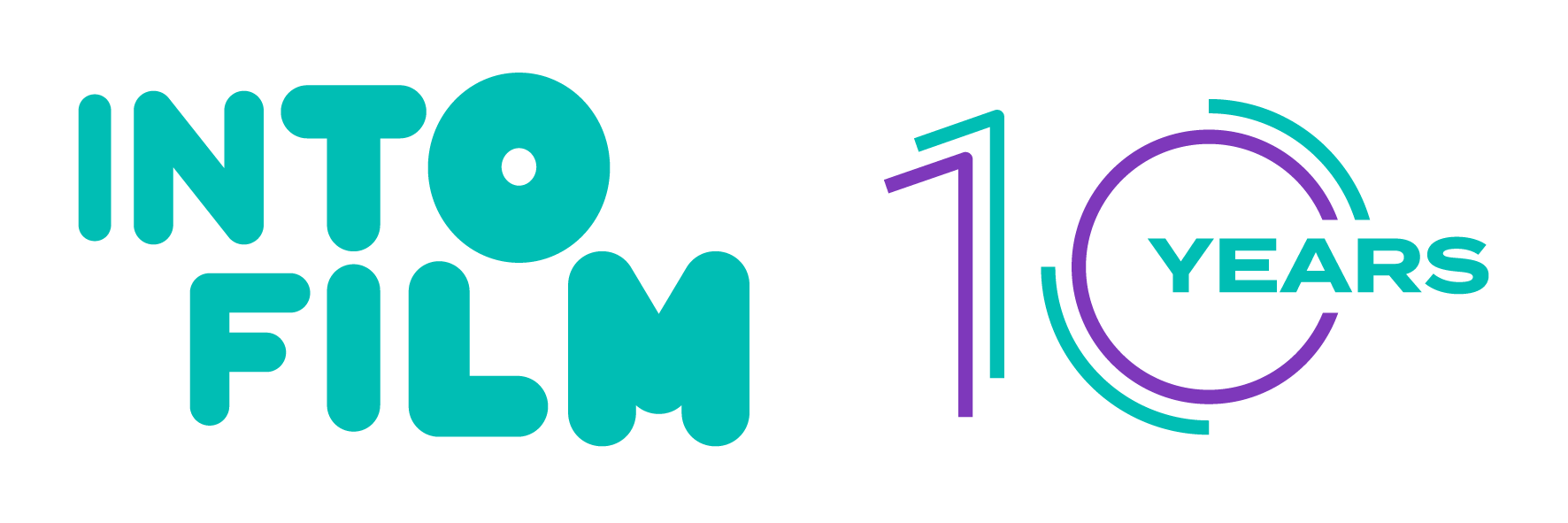
Log in Create an Account
Le Voyage Dans La Lune (A Trip To The Moon)
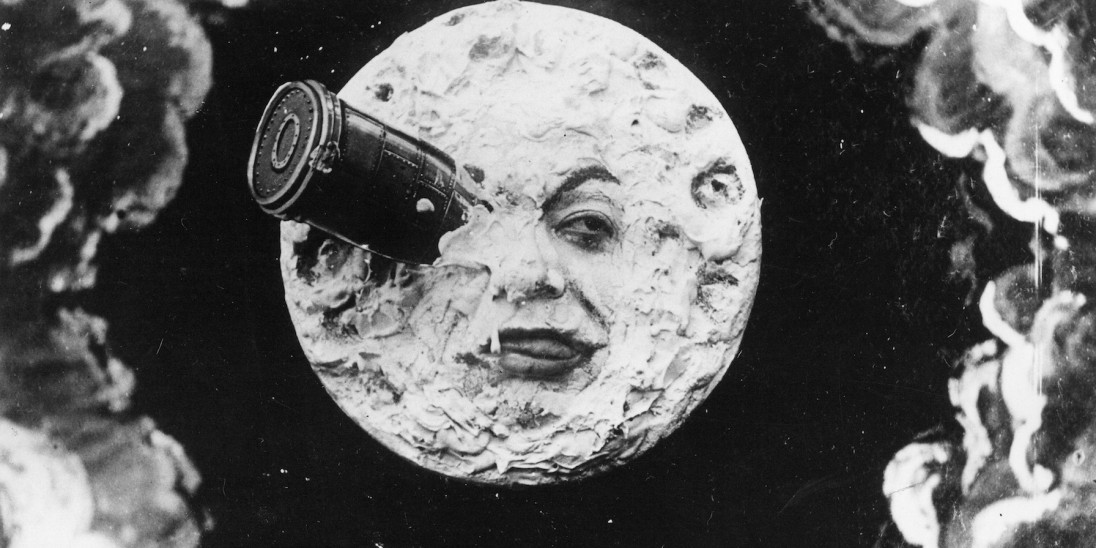
Film Details
Science Fiction and Fantasy, Short Films, Silent
No Dialogue

One of the first narrative films in cinema history, A Trip to the Moon is a playful sci-fi story from the silent era. A group of astronomers agree to take part in a dangerous exploration mission and are rocketed into space in a metal capsule. When they land on the moon, they encounter surreal plants, creatures and fantastical beings, all brought to life with inventive special effects. Director Georges Méliès is credited with having invented the jump cut, an editing trick for making objects and people ‘magically’ appear or disappear on film – a technique that has influenced generations of filmmakers and is still being adopted by today’s TikTok creators. This iconic short film is wildly imaginative, capturing audiences with the stark magic of the moving image to transport them to the moon.
- George Méliès
Cast (in alphabetical order)
- Victor André ,
- Bleuette Bernon ,
- Georges Méliès

Also available with this film on Into Film+
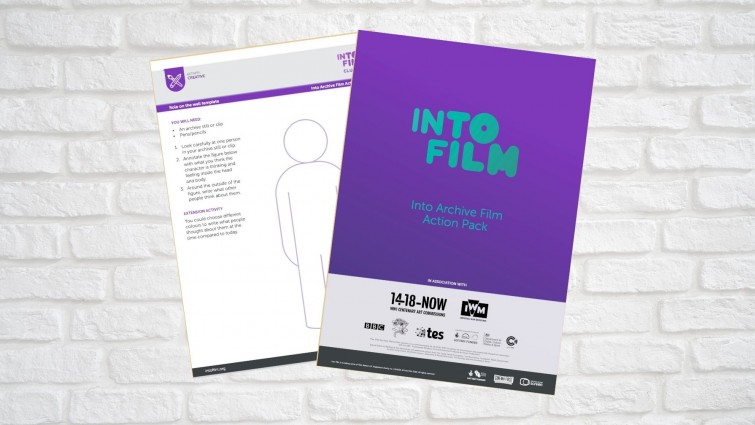
5 RESOURCES
Additional details, classification.
Contains very mild fantasy violence.
Find out more on the BBFC website
Engaging for ages
Into Film recommend this film is engaging for this age range. Please refer to the BBFC guidance for further help in your film choice.
This film is part of the following theme
Also available with this film on into film+, resources to use with this film.
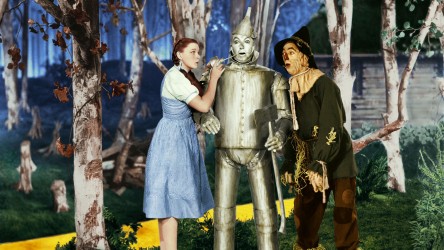
A Brief History of Cinema
This From Silent to CGI: A Brief History of Cinema teaching resource tracks the progress of cinema from the 1800s to the present day.
Suitable for 7–14
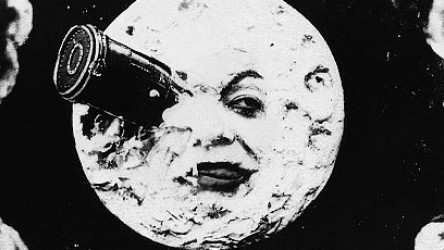
BFI Sci Fi - A Trip to the Moon
A lesson plan to work with the silent classic A Trip to the Moon as stimulus for a KS3 English lesson.
Suitable for 11–14
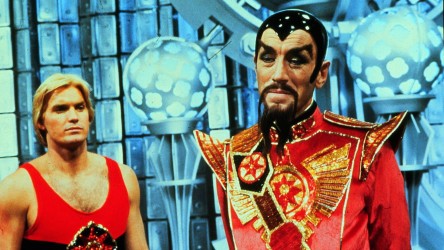
BFI Sci-Fi Flash Gordon
A lesson plan to work with the 1980s classic Flash Gordon as stimulus for a KS3 History, English or Citizenship lesson

BFI Sci-fi Into Film Festival
This resource supported the BFI Sci-fi strand at the Into Film Festival
Suitable for 11–16
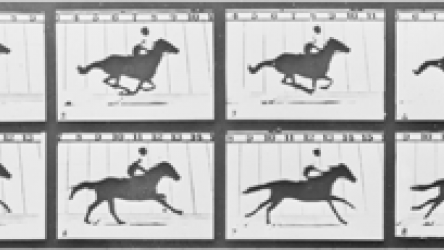
Early Animation
A brief history of early animation techniques and pioneers.
Suitable for All ages
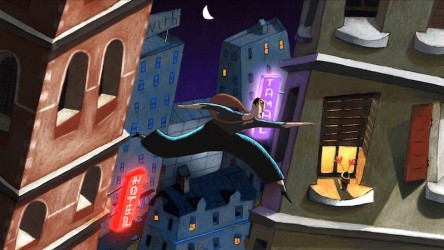
French Film for Primary Clubs
European day of languages, 26 sep.
A resource to support primary Into Film Club members watch, discuss and review French films.
Suitable for 7–11
Into Archive Film Action Pack
This pack provides activities to use with any archive stills or footage.
Related Films

The Myth of Haftvad Worm (2018)
Stream on Into Film+
A woman finds a worm that can spin cotton, but her father plans to use the creature to become rich.
Cert ificate Unclassified
7–14 years 8 mins
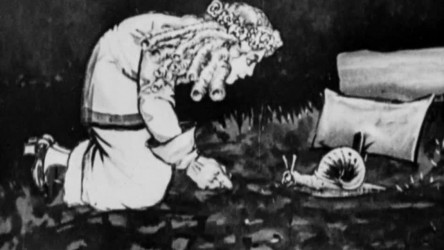
Oh'phelia A Cartoon Burlesque (1919)
Archive cut-out animation that parodies the characters of 'Hamlet' to tell an amusing version of the age-old Shakespeare classic..
11+ years 10 mins
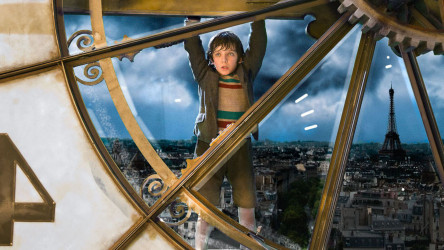
Hugo (2011)
Set in 1931 Paris, an orphan living within the walls of a train station gets wrapped up in a mystery about his father.
1,977 Reviews

7–16 years 126 mins
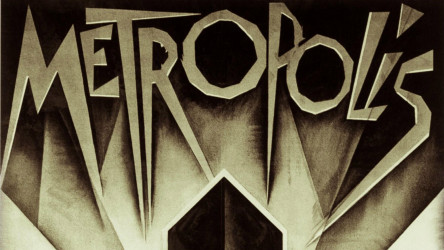
Metropolis (1927)
This visually spectacular German sci-fi classic (made, incredibly, in 1927) sees the rich live in skyscrapers and the poor toil underground.

11+ years 138 mins
Rate this film
Club Leaders can rate films! Help other club leaders decide if this film is suitable for use in their film club by giving it a rating.
Your rating
Click a star to rate this film
Ratings guide
- Worked brilliantly
- Went down well
- Had some value
- Did not enjoy it
- Would not use again
Member rating
Leader rating.
1 leader rating
Reviews (85)
Members rating
Sort reviews by
Viewing 0 of 0 Reviews found.

Into Film Clubs
Into Film Clubs provide opportunities to watch, review and make films.
Start an Into Film Club

Do I Need a Licence?
Information on which licences you need to show films in your education setting.
Find out more
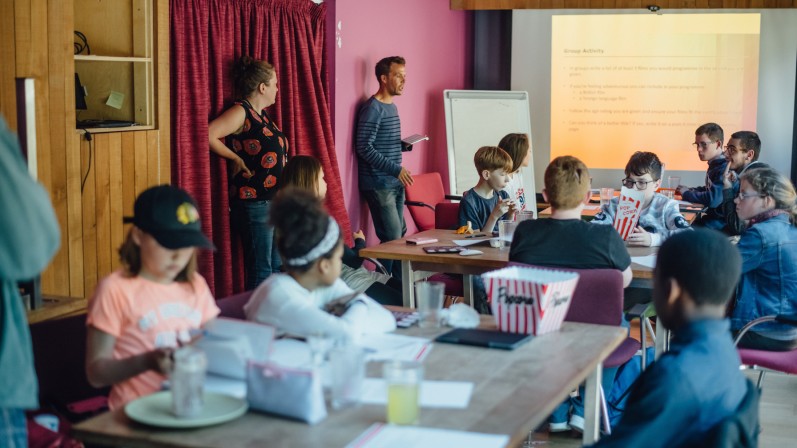
How do Into Film Clubs work?
Find out more about what's involved in running your very own Into Film Club.

Learn to use film to raise literacy attainment and engage students.
You may also be interested in...
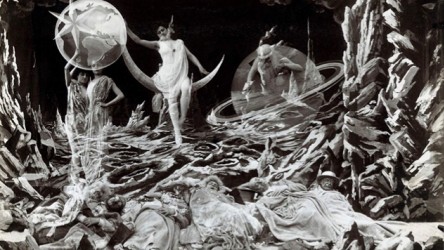
BFI National Archive shorts available to stream with Into Film+
We've partnered with the BFI to make a collection of archive films, preserved by the BFI National Archive, available for educators to stream with Into Film+.
Reading time 5 mins
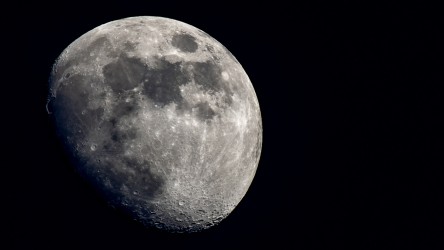
Celebrating 50 years since the Moon landings
On 20 July 1969, human kind first landed on the moon. Celebrate this inspiring, our of this world achievement in your class with our films, resources and more.
Reading time 6 mins

Ella from Chichester wins Review of the Year 2022
Congratulations to Ella, whose review of George Méliès' 1902 sci-fi classic 'A Trip to the Moon' has won Review of the Year.
Reading time 3 mins

How film clubs can open up the world for small communities
June's Leader of the Month, Jennifer Skinner, from the Isle of Tiree, Scotland, explains how running a film club has benefitted the small island community.
Viewing time 5 mins
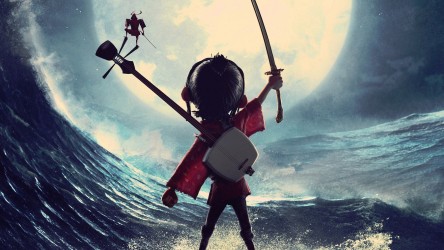
Kubo and the Two Strings: How LAIKA push the boundaries of stop-motion
We look at how LAIKA's Kubo and the Two Strings recreates an authentic-yet-fantastic ancient Japan, whilst pushing the boundaries of stop-motion animation.
Reading time 7 mins

The science behind 'The Martian'
Ridley Scott's space-faring epic 'The Martian' may be rooted in science fiction, but there's a lot more science fact in it than you might think.
Reading time 9 mins
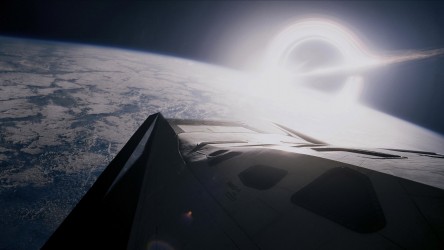
Into Film - Into Space is an ongoing project which provides a host of great free activities around the themes of space and exploration.
Resources 31
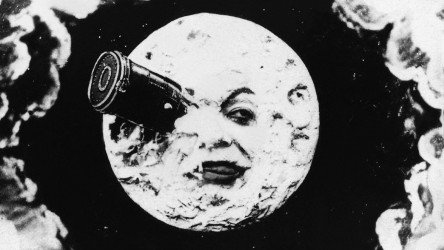
Archive Film
Exploring the highlights of the rich and varied catalogue of Archive film available to stream on Into Film+ and Into Film+ Premium.
No. of films 8
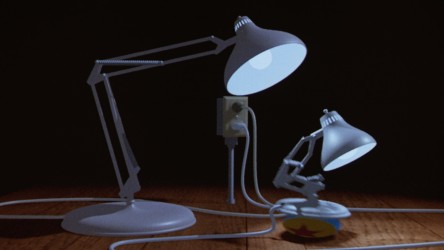
Short Films for Primary
A range of short films suitable for primary ages which are available on the Into Film catalogue.
Suitable for 5–11
No. of films 15
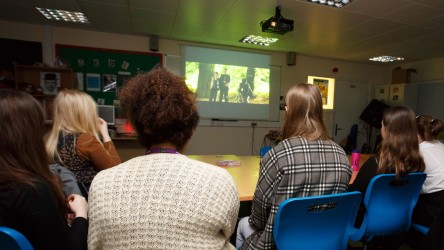
Short Films for Secondary
The best short films available on the Into Film catalogue for secondary ages that are great for literacy learning.
Suitable for 11+
No. of films 25
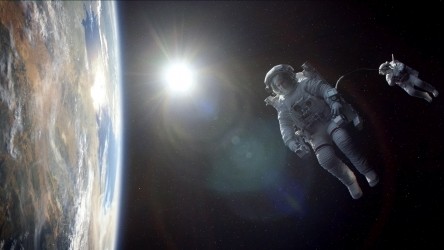
World Space Week, 4 Oct - 10 Oct
A collection of films taking in space exploration throughout cinema history.
No. of films 16
Viewing 0 of 0 related items.
What our educators say
"We are currently screening The Wizard of Oz, profound film that it is, and the last film Wall-E. It's been rewarding observing the KS1 6 year olds run the gamut of emotions from wonder to sadness to joy. " - Mark Ellis, Teacher, ChristChurch C of E Primary School, London

IMAGES